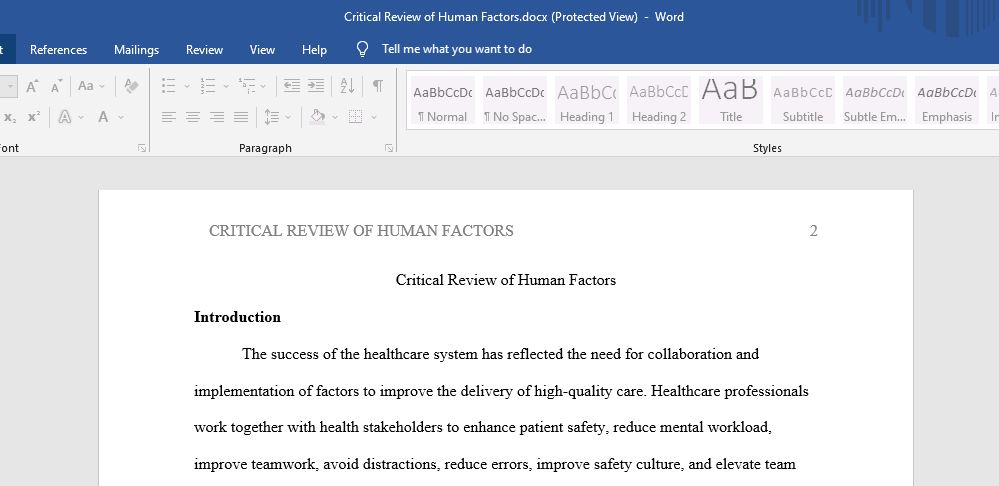Critical Review of Human Factors
The aim of this assessment task is for students to respond to 3 self-selected topics that are based on the content
in Modules (1 & 2) and associated readings. This assessment task enables students to demonstrate their knowledge
and understanding of key concepts related to quality and safety in health care delivery.
Details:
Short answer questions and responses- Informed by evidence from the literature students will write a brief response
(approximately 500 words) to three (3) self-selected questions out of the five (5) question choices provided.
Assessment 1: Short answer
Select any three (3) of the five (5) questions listed below:
1. Define quality in health care and explain the key principles and characteristics of total quality manage-
ment(TQM) / continuous quality improvement (CQI) in the health care context. In your answer include
a brief discussion about how TQM / CQI approaches differ from industry, or business-based quality manage-
ment and performance improvement methods. Refer to one of the following industry, or business-based, quality
management and performance improvement method; a) six sigma, b) lean thinking or c) balanced scorecard in
your discussion.
2. What is meant by the term ’patient safety’? Differentiate between safety in health care and patient safety. In
the context of patient safety, what is understood by the term risk management and what is its aim? Briefly
discuss the approaches and/or tools that a health professional is likely to use when completing a risk analysis.
3. Explain what is meant by the term ’safety culture’ in health care and discuss how it can be measured? What
is the significance of a poor safety culture for health care professionals and patients?
4. Does clinical governance differ from clinical leadership in the context of quality and safety in health care provi-
sion? In your discussion include an overview of how professional communication between health professionals
can enhance or impair the safety and wellbeing of patients?
5. In 2012 the Australian Commission on Safety and Quality in Healthcare implemented National Safety and
Quality Health Service (NSQHS) Standards and were reviewed in 2017. Why were the standards developed and
how have they changed over time? Identify and explain two legal or monitoring requirements incorporated in
the Australian National Safety and Quality Health Service (NSQHS) Standards and explain how they enhance
quality and safety in health care.
Answer preview:

word limit:1959
